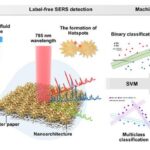University of Pittsburgh scientists working with UPMC infection preventionists have developed an infectious diseases detection platform that, over a two-year trial, was found to stop outbreaks, save lives, and cut costs.
The Enhanced Detection System for Healthcare-Associated Transmission (EDS-HAT) takes advantage of increasingly affordable whole genome sequencing (WGS) to analyze infectious disease samples from patients. When the sequencing detects that any two or more patients have near-identical strains of an infection, it flags the results for the hospital’s infection prevention team to find the commonality and stop the transmission.
The scientists said results from the trial, reported in Clinical Infectious Diseases, make the case for adopting the platform in hospitals nationwide and for the development of a national early outbreak detection database.
“We saved lives while saving money,” said Alexander Sundermann, DrPH, assistant professor of infectious diseases at Pitt’s School of Medicine. “This isn’t theoretical—this happened in a real hospital with real patients. And it could easily be scaled. The more hospitals implement this practice, the more everyone benefits, not just by stopping previously undetected outbreaks within the walls of the hospital, but by finding medical device or medication-linked outbreaks sweeping the nation.”
Sundermann is lead author of the team’s published paper, which is titled “Real-Time Genomic Surveillance for Enhanced Healthcare Outbreak Detection and Control: Clinical and Economic Impact.” In their paper, the team concluded, “Real-time genomic surveillance enabled the rapid detection and control of outbreaks in our hospital and resulted in patient and economic benefits.” They suggest their study demonstrates the feasibility and effectiveness of integrating genomic surveillance into routine infection prevention practice, “offering a paradigm shift in healthcare outbreak detection and control.”
Outbreak detection in healthcare settings is “a vital aspect of infection prevention because it directs interventions to prevent additional pathogen spread,” the authors noted. Yet despite advances in healthcare technologies, methods used for outbreak detection have remained largely unchanged for decades.
Without the use of genomic sequencing, hospital infection preventionists have no way of knowing if two hospitalized patients coincidentally have the same infection or if one of them was infected by the other. Because of this, patients with the same type of infection who don’t have an obvious link—such as staying in the same inpatient unit—may unknowingly spread the infection, leading to an outbreak growing significantly before it is detected. Conversely, infection preventionists may spend time and resources trying to avert a nonexistent outbreak when patients happen to have the same type of infection, but the transmission was from unrelated sources.
Traditional methods for outbreak detection usually rely on surveillance and monitoring for an observed increased incidence of infections from a baseline level, which prompts follow-up investigation, the team continued. “Whole genome sequencing (WGS) is the current standard for genetic relatedness testing, and when used for this purpose is referred to as ‘reactive WGS’.” However, this approach lacks timeliness, often misidentifies outbreaks that are not confirmed, and misses many consequential outbreaks altogether.”
In contrast, they noted, genomic surveillance using WGS, or “prospective WGS surveillance,” is an approach that “overcomes the limitations of current outbreak detection with reactive WGS by enabling the sequencing of pathogens regardless of the knowledge of an outbreak.” This approach could identify outbreaks as early as two patients, the authors pointed out, which would allow for quick interventions and stop further transmission. And while this approach in healthcare settings has not yet been widely adopted for real-time use, particularly because it needs investment in WGS infrastructure, “… recent studies have shown WGS surveillance as a real-time infection prevention and control (IP&C) tool is promising given its potential to prevent infections and avert healthcare costs.”
Sundermann and colleagues developed the Enhanced Detection System for Healthcare-Associated Transmission as a real-time genomic surveillance program for outbreak detection and mitigation, “which uses novel approaches to detect and investigate outbreaks quickly and accurately,” they stated.
The team’s reported, real-time genomic surveillance study using the platform ran from November 2021 through October 2023 at UPMC Presbyterian Hospital. “Whole genome sequencing (WGS) was performed weekly on healthcare-associated clinical bacterial isolates to identify otherwise undetected outbreaks,” the authors explained. “IP&C interventions were implemented in real-time based on identified transmission. A clinical and economic impact analysis was conducted to estimate infections avoided and net cost savings.”
The team’s analyses showed that during the time of the study, the EDS-HAT prevented 62 infections and five deaths, compared to if the system had not been running. The system netted savings of nearly $700,000 in infection treatment costs—a 3.2-fold return on investment. “Due to real-time genomic surveillance, we were able to early identify many outbreaks at just two cases and promptly intervene, thus preventing additional cases,” the authors further noted. “Moreover, we estimated substantial net cost savings attributed to avoided infections from our interventions.”
Co-author Graham Snyder, MD, medical director of infection prevention and hospital epidemiology at UPMC, said, “These results are remarkable. This project clearly illustrates how UPMC’s academic partnership with Pitt is providing our patients with outstanding patient care while creating innovative solutions that pave the way for better patient care worldwide.”
The researchers suggested that if healthcare facilities across the United States adopt EDS-HAT, a nationwide outbreak system could be developed, similar to PulseNet, the U.S. Centers for Disease Control and Prevention’s network for detecting multistate outbreaks of foodborne illness. “Such a system could also potentially identify and track multi-institutional healthcare outbreaks linked to contaminated medications or devices more effectively,” the scientists stated. Sundermann and colleagues previously found that, had such a system existed, the 2023 outbreak of deadly bacteria linked to contaminated eye drops could have been stopped far earlier.
“It is a no-brainer to implement EDS-HAT at every health care facility nationwide,” said senior author Lee Harrison, MD, professor of infectious diseases at Pitt’s School of Medicine and of epidemiology at Pitt’s School of Public Health. “We hope these findings will contribute to ongoing conversations among U.S. health care leadership, payors, and policymakers about the benefits of genomic surveillance as standard practice in health care.”
In their paper, the team concluded, “… we have shown that real-time genomic surveillance is a feasible IP&C tool to accurately detect and stop outbreaks, while at the same time reducing costs. In essence, EDS-HAT is a real-time quality improvement tool that allows for early identification of outbreaks and rapid implementation of corrective measures.”
They further stated that the combined results of their study with those of other studies suggest that genomic surveillance should be considered a standard practice in healthcare. “Implementation of real-time WGS surveillance in routine IP&C practice is a paradigm shift that has the potential to have substantial clinical impact and cost savings.”



